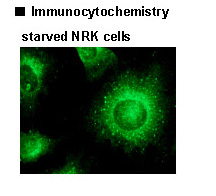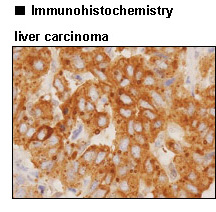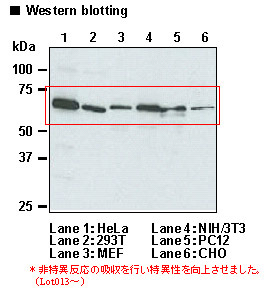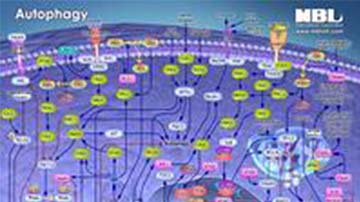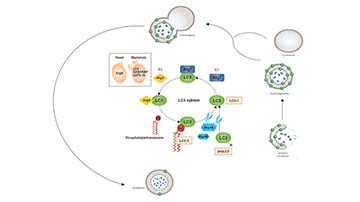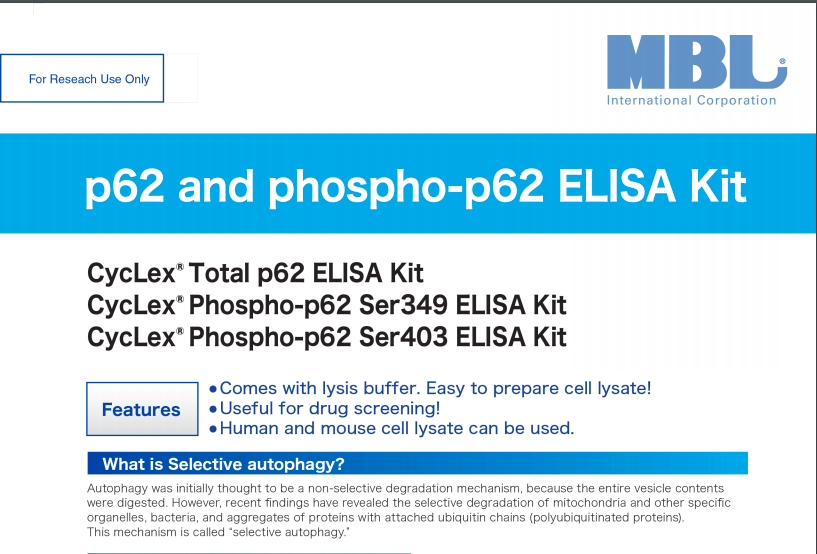Anti-p62 (SQSTM1) (Human) pAb (Polyclonal Antibody)
This antibody is validated for multiple applications (WB, IHC, ICC and IP) and is widely cited, including in research papers with more than 200 citations (Waguri S, Komatsu M. Biochemical and morphological detection of inclusion bodies in autophagy-deficient mice. Methods Enzymol. 453, 181-96 (2009)). This is a polyclonal antibody of 100 μl that is raised in rabbit and is reactive with human, hamster, mouse, rat.
| Target | p62 |
|---|---|
| Product Type | Antibody |
| Application | ICC, IHC, IP, WB |
| Clonality | Polyclonal |
| Conjugate | Unlabeled |
| Isotype | Affinity Purified Ig |
| Immunogen | Recombinant human p62 (120-440 a.a.) |
| Host Species | Rabbit |
| Species Reactivity | Human, Hamster, Mouse, Rat |
| Formulation | 100 μl volume of PBS containing 50% glycerol, pH 7.2. No preservative is contained. |
| Research Area | Autophagy |
| Storage Temperature | -20°C |
| Protocols | ICC, IHC, IP, WB |
| Regulatory Statement | For Research Use Only. Not for use in diagnostic procedures. |
